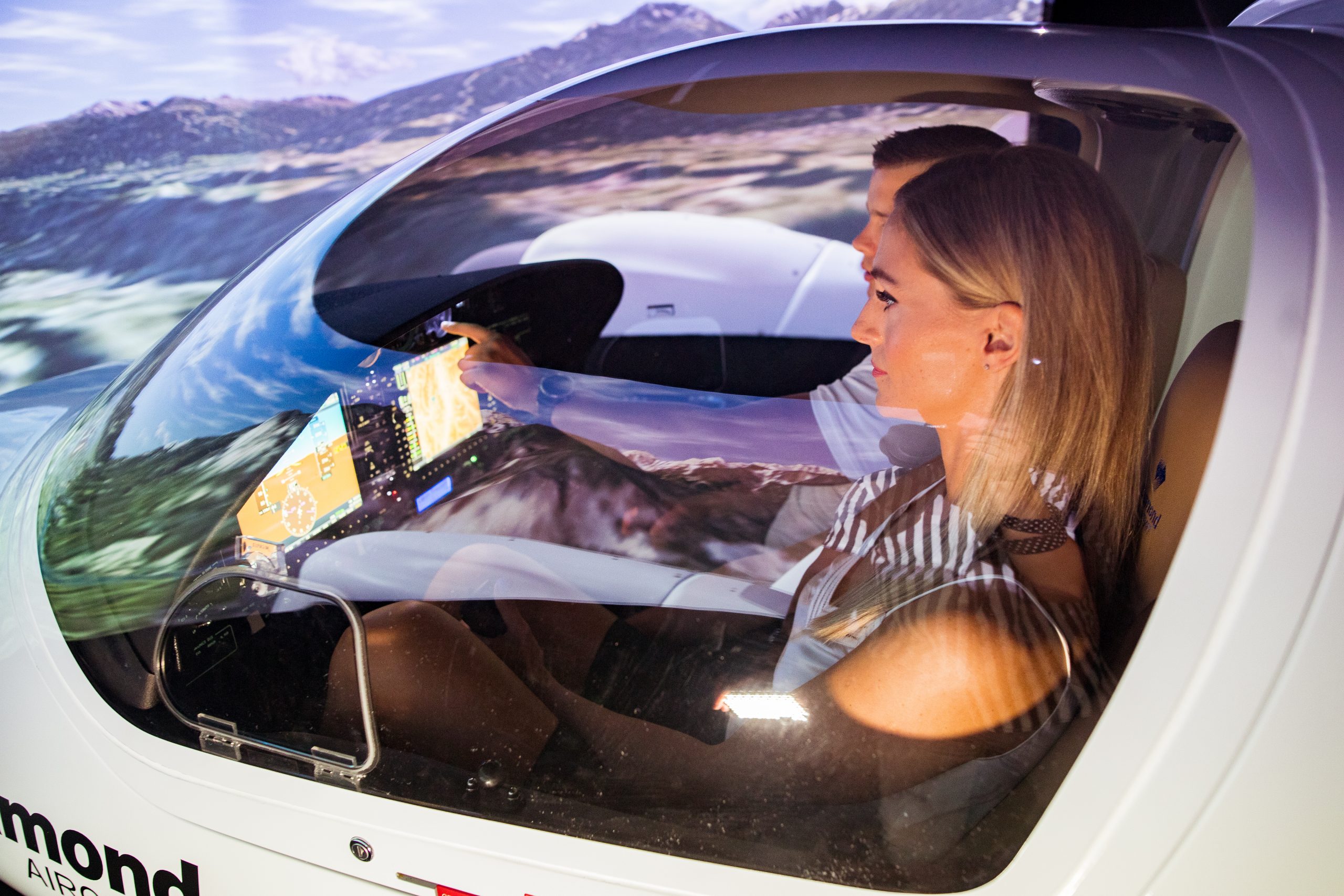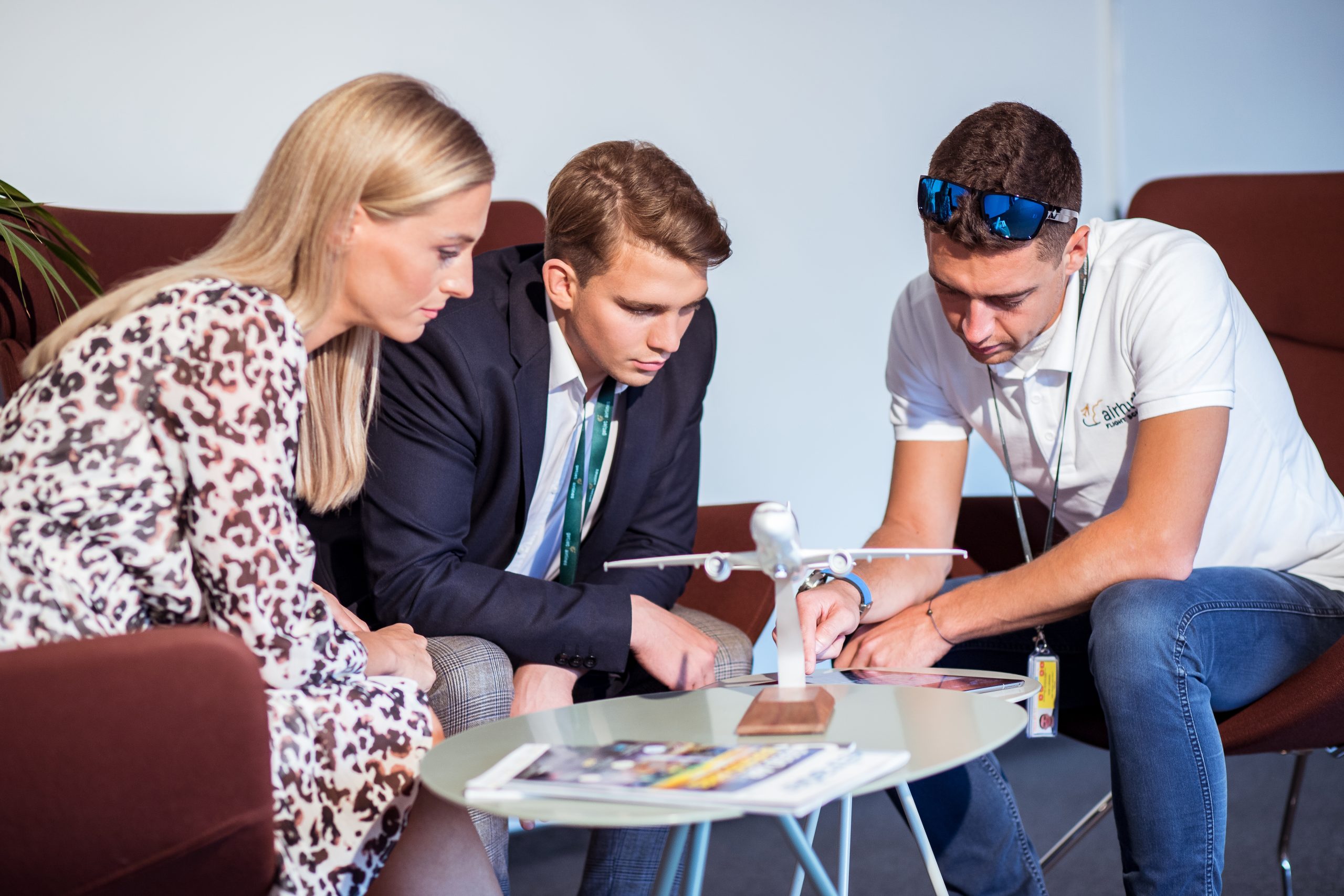BECOME
AN airline PILOT
Sign up for ATPL integrated training program and start your pilot journey in less than two years!
ABOUT ATP(A) INTEGRATED
Airline Transport Pilot License (ATPL Theory + MEP/IR/CPL/MCC) Integrated is a comprehensive training program, which will help you to acquire the professional skills needed to become a commercial pilot in the shortest time possible. The program will enable you to operate as a co-pilot in a multi-pilot environment, on multi-engine airplanes and to obtain the frozen ATPL license.
The study program is divided into two main parts: Ground School (theory) and Practical Training (flights).
The Ground School will take place at the Airhub Training facilities in Vilnius, Lithuania. Whereas you will practice your flight training in the Vilnius international airport (VNO).
Start Your Pilot Training Today
ATO
Airhub provides professional training for people willing to take their first steps into aviation, and advanced training solutions for a licensed commercial pilot.

APPROVAL
AIRHUB is an Approved Training Organization – providing initial and advanced training solutions for pilots. We are approved by European Aviation Safety Agency and Transport competence agency in Lithuania.
WHY SHOULD YOU STUDY WITH US?
Strong background
Airhub is fully supported by the ACMI service provider GetJet Airlines. An "out of the box" attitude company and a trustworthy aviation partner.
Job guaranteed
Commit yourself to aviation, and GetJet Airlines will commit to you as your long - term partner after you have successfully completed your training.
Experienced instructors
You will receive direct GetJet Airlines supervision and mentoring, as well as providing working commercial pilots as your instructors.
THOROUGH CANDIDATE SELECTION
We select the most aviation-ready candidates and offer them state-of-the-art training, with the goal of raising elite professionals in the aviation industry.

HOW TO BECOME AN AIRLINE PILOT IN A 6 STEPS
Select training programme
Apply to the
Airhub Aviation
Succeed in the assessment
Finish a medical examination
Get accepted to the Airhub Aviation
Start flying for partner airlines after two years of training!

INDIVIDUAL FOCUS
Starting only 2 classes a year allows us to give the maximum attention to each student. Training pilots in smaller groups also gives us a greater opportunity for individual focus, up-to-date training and two years of experience with industry professionals.
THEORETICAL PART OF THE TRAINING
The theoretical part consists of 14 different subjects. There is 757 hours of training in total, which is delivered over a period of 9 months, as well as 25 hours of Multi-Crew Cooperation and 5 hours course of Advanced Upset Prevention and Recovery training.
The time distribution per subject is shown below:
| Subject | Amount, hours | ||
|---|---|---|---|
| Classroom | Computer based training (CBT) | Total | |
| Air law | 32 | 8 | 40 |
| Aircraft general knowledge – airframe, systems and power plant | 96 | 24 | 120 |
| Aircraft general knowledge – instrumentation | 48 | 12 | 60 |
| Flight performance and planning – mass and balance | 29 | 11 | 40 |
| Flight performance and planning – performance | 40 | 10 | 50 |
| Flight performance and planning – flight planning and monitoring | 40 | 10 | 50 |
| Human performance and limitations | 36 | 9 | 45 |
| Meteorology | 65 | 15 | 80 |
| Navigation – general navigation | 50 | 15 | 65 |
| Navigation – radio navigation | 56 | 14 | 70 |
| Operational procedures | 25 | 5 | 30 |
| Principles of flight | 48 | 12 | 60 |
| Communications (VFR – 091, IFR – 092) | 40 | – | 40 |
| Knowledge, Skills and Attitude (KSA) | 7 | – | 7 |
| Total | 612 | 145 | 757 |
| SEP Aircraft Flight Manual | 6 | 4 | 10 |
| MEP Aircraft Flight Manual | 8 | 2 | 10 |
| Total | 14 | 6 | 20 |
ATPL integrated training includes the following subjects:
Air law
Aircraft general knowledge
Instrumentation
Mass and Balance
Flight planning and monitoring
Performance
Human performance and limitations
Meteorology
General navigation
Radio navigation
Operational procedures
Principles of flight
Communications
Knowledge, skills and attitudes (KSA)
Theory is as important as practice, so in order to finally sit in the pilot’s chair, you will have to pass the first 4 exams at the Ground School. This means that you will start learning to control the plane after ~3 months of theoretical studies.
Are You interested in ATP(A) theoretical part only? Click button below and read more!
PRACTICAL PART OF THE TRAINING
First, you will carry out Diamond DA40 Single Engine Piston flight training and will work towards your first solo flight, followed by a solo cross-country flight and finally the flight check.
After this, you will begin flying under Instrument Flight Rules (IFR) – starting off in a simulator and transitioning back into a single-engine aircraft.
In the next phase, you will move onto a multi-engine aircraft and after completing the Instrument Rating in this type of an aircraft, you will have to log different types of hours to finish your ATPL Integrated studies, in order to receive the frozen ATPL.
Successfully completing all of these stages means that you will be granted a Commercial Pilot Licence with a Multi-Engine Instrument Rating, also known as “CPL / MEIR”. This licence will allow you to fly passengers in twin or single-engine aircraft.
Meanwhile, in order to transition into a multi-crew environment, the pilot will have to take a Multi-Crew Cooperation Course (MCC). The aim of this training is to familiarise you with interpersonal behaviour and teach you how to make the best use of crew cooperation techniques.
Last but not least, from 20 December 2019, pilots that don’t have a type rating and are planning to get one an Advanced Upset Prevention and Recvery training is introduce to increase the ability of pilots to recognize and avoid situations that can lead to airplane upsets and to improve their ability to recover control of an airplane that diverges from a crew’s desired airplane state. This is final step before starting Type Rating training!
FLIGHT TRAINING SUMMARY
| Phase 1 – Basic Handling | 11:00 |
| Phase 2 – General handling and cross-country navigation | 27:00 |
| Phase 3-1 – Cross-country operations | 42:00 |
| Phase 3-2 – Night visual flight training | 05:00 |
| Phase 4-1 – Initial instrument flight training | 37:30 |
| Phase 4-2 – Procedural and en-route instrument flight training | 58:30 |
| Phase 4-3 – Multi-engine aircraft flight training | 11:00 |
| Phase 5 – Advanced UPRT | 03:00 |
| Phase 6 – MCC training | 15:00 |
| Total | 210:00 |
| Skill test for SEP(land) rating | 01:00 |
| Skill test for SEP/IR rating | 01:00 |
| Skill test for MEP(land) rating | 01:00 |
| Skill test for MEP/IR rating | 01:00 |
| Skill test for CPL(A) licence | 01:30 |
| Total | 215:30 |
| MCC Training | 15:00 |
| Program Total | 230:30 |
MINIMUM REQUIREMENTS
- Must be at least 18 years of age at start of program
- Proficient in the English language (verbal and written)
- Obtain an EASA Class 1 Medical.
Age: At least
18 years old
English language
knowledge
Valid 1st class
medical certificate